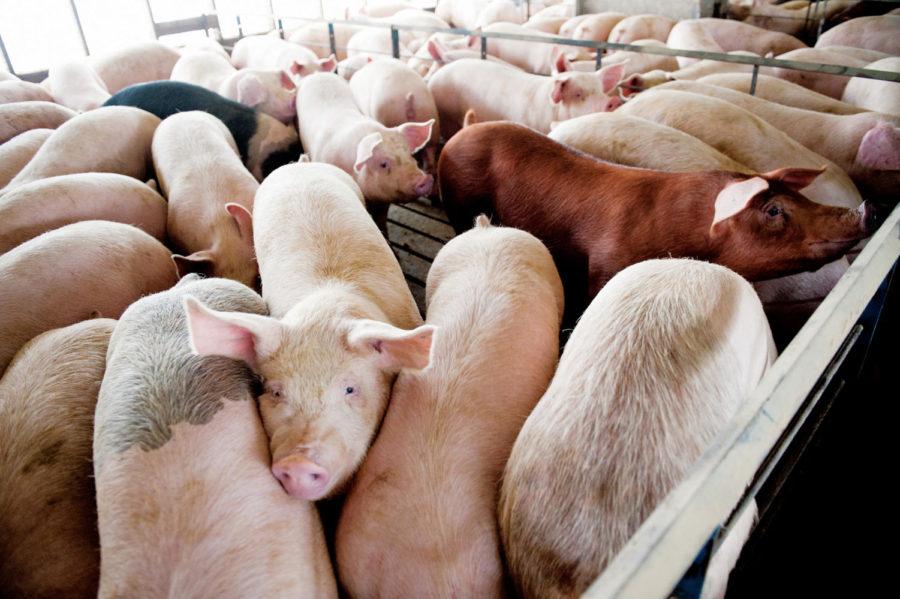ISU veterinarian updating study on pig disease
Photo: Bryan Besler/Iowa State Daily
Finishing pigs being raised on the 450 Farm. McDonald’s is phasing out its purchases from hog suppliers that utilize gestation crates on sows.
February 28, 2016
A costly swine disease is impacting the economy, and one ISU veterinarian is calculating the numbers.
Dr. Derald Holtkamp, associate professor of veterinary diagnostic and production animal medicine, is updating a study he and others worked on in 2012 to discover the economic impact of porcine reproductive and respiratory syndrome, or PRRS.
The virus causes reproductive problems in sows, leading to abortion and stillborn piglets. It also causes respiratory problems in growing pigs.
The disease is most commonly passed from infected pigs to healthy swine, according to North Carolina State University.
No cure is currently available, just some vaccines; however, these vaccines are unable to prevent the disease and are only able to reduce the seriousness of production loss. A genetically modified pig was recently developed, but Holtkamp said it is too early to tell whether it will be successful.
Holtkamp is beginning to work on an updated three-year study of the economic impact that is now being funded by the National Pork Board. This virus not only increases swine death rates but also leads to an expensive problem, which is estimated to be the costliest disease in the swine industry.
Holtkamp estimated in his last study that PRRS annually costs the pork industry $664 million.
“Since 2012 we’ve improved how we go about controlling the disease,” Holtkamp said.
Large pork farms have improved their biosecurity to prevent the disease from getting into the sows’ rooms, Holtkamp said. This includes sanitation, disinfection in trailers, more control in the entry of people and monitoring health statuses of new pigs.
The new study Holtkamp will start will look at many additional factors.
“We will be collecting production records, outbreak history from farms, and analyzing data and impact of outbreaks,” Holtkamp said.
The plan is to use the same budget model used in the last study on production loss due to the PRRS virus.
The National Pork Board expects Holtkamp and his other research partners to release quarterly updates starting this spring for the three-year study.
The goal for 2020 is to have a 20-percent decrease in monetary losses due to the disease.
PRRS has been a problem for the pork industry since being discovered in the 1980s, but Holtkamp believes with more time spent researching, more can be learned.
“If you don’t track it, you can’t manage it,” Holtkamp said. “Hopefully we can start to make some headway [with the new study].”







